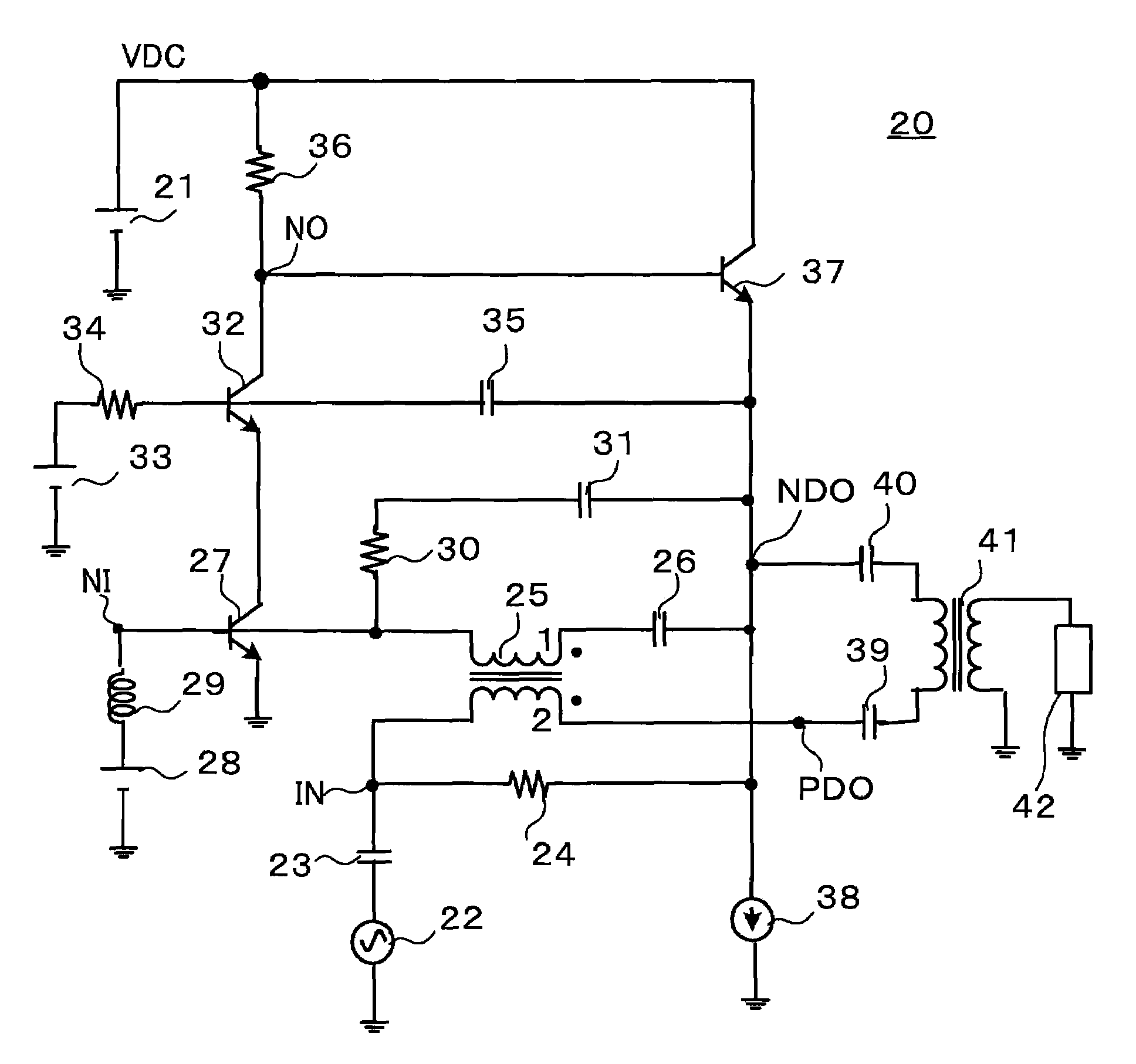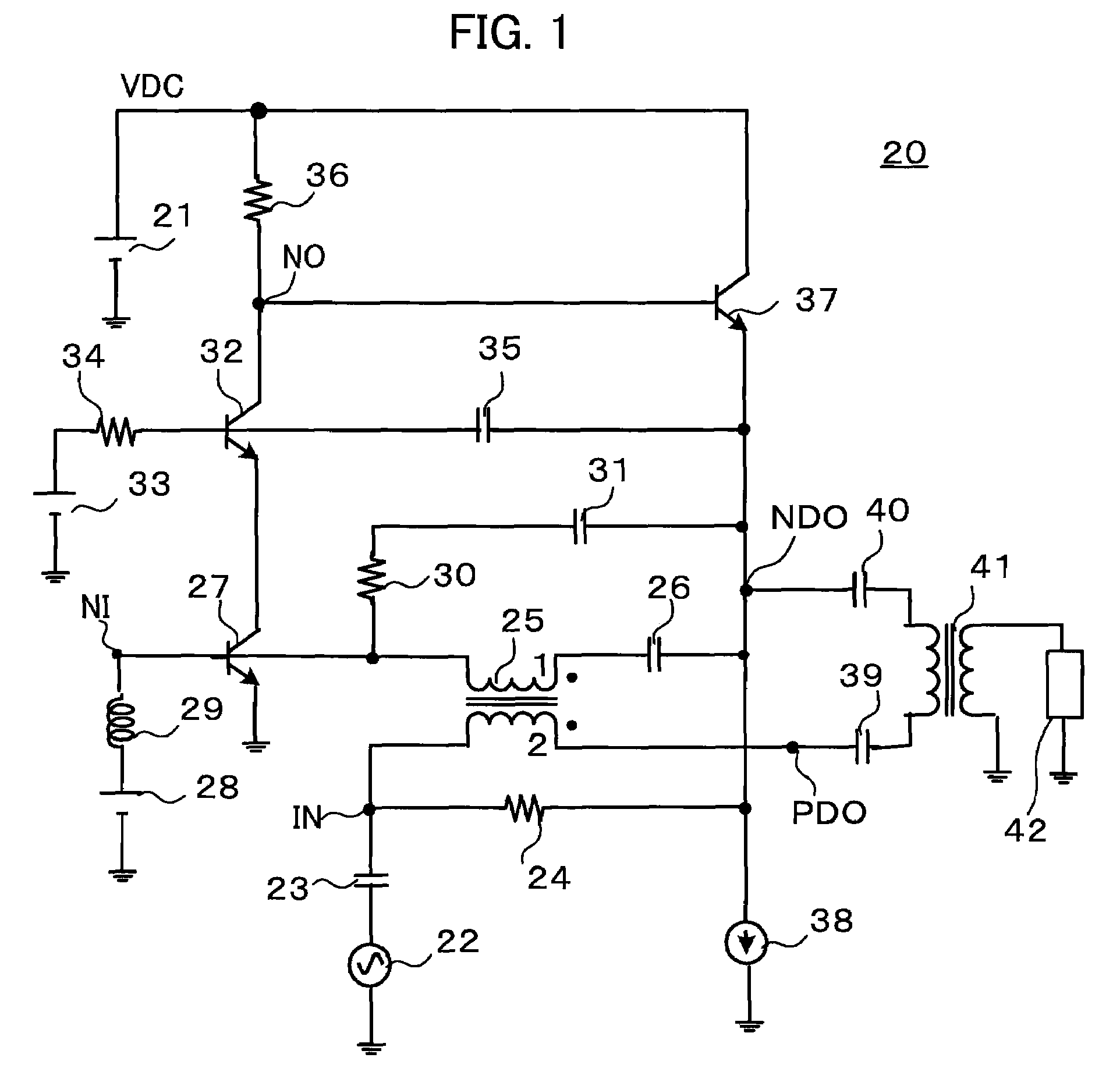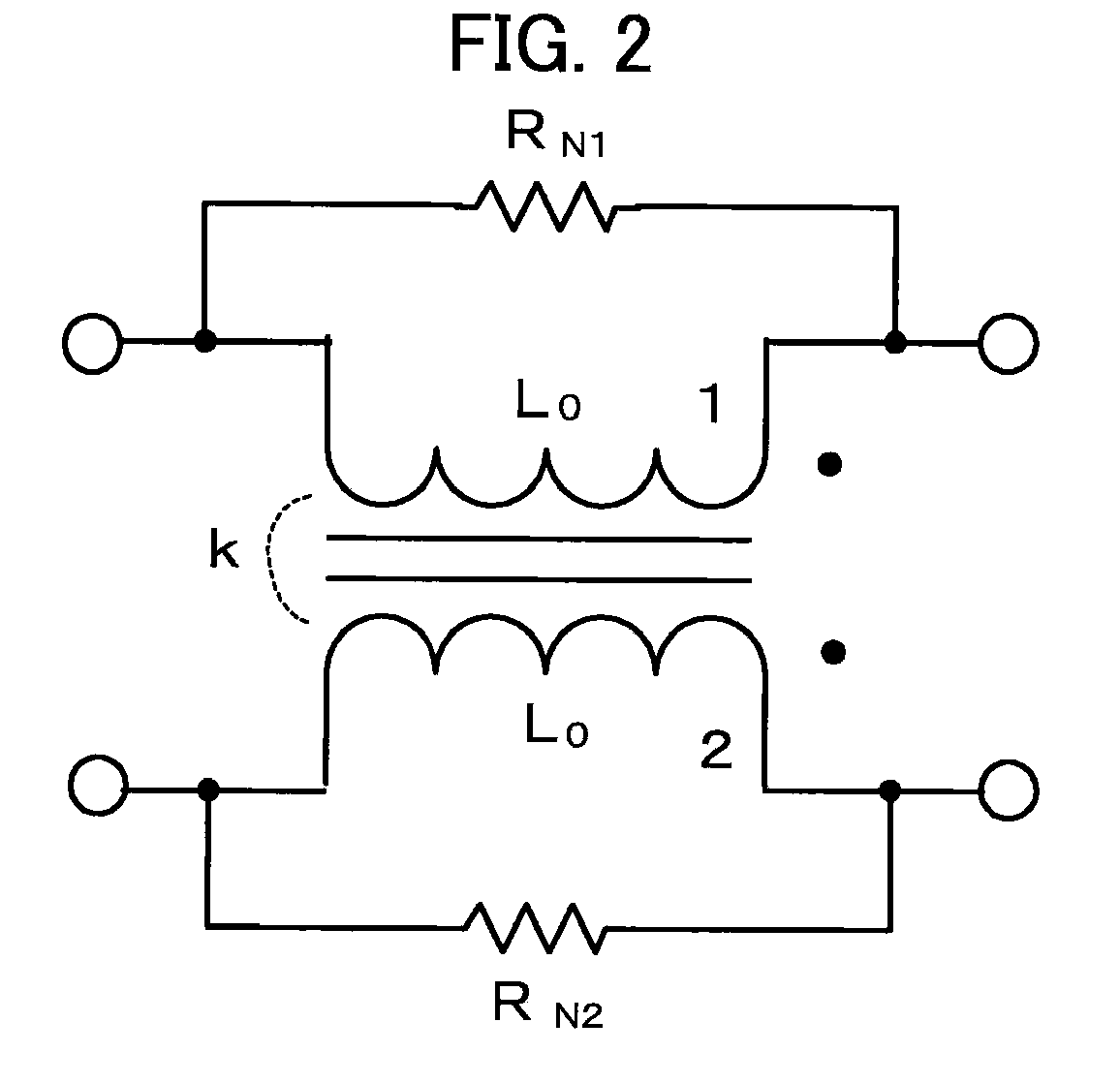Low noise amplifier
a low-noise amplifier and amplifier technology, applied in the direction of low-noise amplifiers, high-frequency amplifiers, rf amplifiers, etc., can solve the problems of easy oscillation, increase in the number of parts, increase in the area of printed circuit boards, etc., to improve the input impedance matching of an lna, high dynamic range, and high gain of the feedback loop
- Summary
- Abstract
- Description
- Claims
- Application Information
AI Technical Summary
Benefits of technology
Problems solved by technology
Method used
Image
Examples
first embodiment
[0074]Referring to the accompanying drawings, a first embodiment of the present invention is described below in detail.
[0075]As shown in FIG. 1, an LNA 20 according to the first embodiment of the invention is a cascode type amplifier, which has a double negative feedback circuit including a transformer and a resistor. The LNA 20 is configured by using transistors with a gain bandwidth fT of 8 GHz, and operates on a DC supply voltage VDC of 10 V supplied from the DC voltage source 21.
[0076]The design specifications of the LNA 20 include a voltage gain of about 2 dB, a maximum feedback loop gain of 40 dB or higher, a phase margin of 30 degrees or greater, and are intended to be suitable for use in a case where an intense interfering signal input is present and a low gain, low distortion and a low noise figure are simultaneously demanded.
[0077]In the LNA 20, a signal source 22 with an output impedance of 50Ω is connected via a capacitor 23 to an input terminal IN to which one end of a ...
second embodiment
[0120]While the foregoing description of the first embodiment has been given of the LNA 20, which hardly has a voltage gain (2 dB or lower), the embodiment cannot be adapted to a case where a meaningful amount of voltage gain is needed. The following description of a second embodiment is given of an LNA 20A, which has a higher voltage gain.
[0121]As shown in FIG. 6, like the LNA 20 in FIG. 1, the LNA 20A according to the second embodiment of the invention operates on the DC supply voltage VDC of 10 V supplied from the DC voltage source DCS, and is configured by using transistors with a gain bandwidth fT of 8 GHz. The design specifications include a voltage gain of about 8 dB, a maximum feedback loop gain of 40 dB or higher, and a phase margin of 30 degrees or greater.
[0122]The LNA 20A uses a transformer 25X configured to have a combination of two transformers 25a and 25b in place of the transformer 25 in the LNA 20 in FIG. 1. The transformers 25a and 25b each have a turn ratio of 1:1...
third embodiment
[0139]As shown in FIG. 11, an LNA 20B according to a third embodiment of the invention is a modification to the LNA 20A in FIG. 6 to which an output buffer is added to lower the output impedance of the positive differential output terminal PDO of the LNA 20A. That is, the hot side of the secondary winding of the transformer 25b is connected via a coupling the capacitor 43 to the base of a transistor 44. The transistor 44 has a collector supplied with the DC supply voltage VDC from the DC voltage source 21, and an emitter connected to a constant current source 45.
[0140]A biasing DC voltage source 47 is connected to the base of the transistor 44 via a choke coil 46. The transistor 44 and the constant current source 45 constitute an emitter follower, which operates as an output buffer circuit. This makes it possible to reduce the value of the output impedance of the positive differential output terminal PDO which corresponds to the emitter of the transistor 44 and reduce the value of t...
PUM
 Login to View More
Login to View More Abstract
Description
Claims
Application Information
 Login to View More
Login to View More - R&D
- Intellectual Property
- Life Sciences
- Materials
- Tech Scout
- Unparalleled Data Quality
- Higher Quality Content
- 60% Fewer Hallucinations
Browse by: Latest US Patents, China's latest patents, Technical Efficacy Thesaurus, Application Domain, Technology Topic, Popular Technical Reports.
© 2025 PatSnap. All rights reserved.Legal|Privacy policy|Modern Slavery Act Transparency Statement|Sitemap|About US| Contact US: help@patsnap.com



